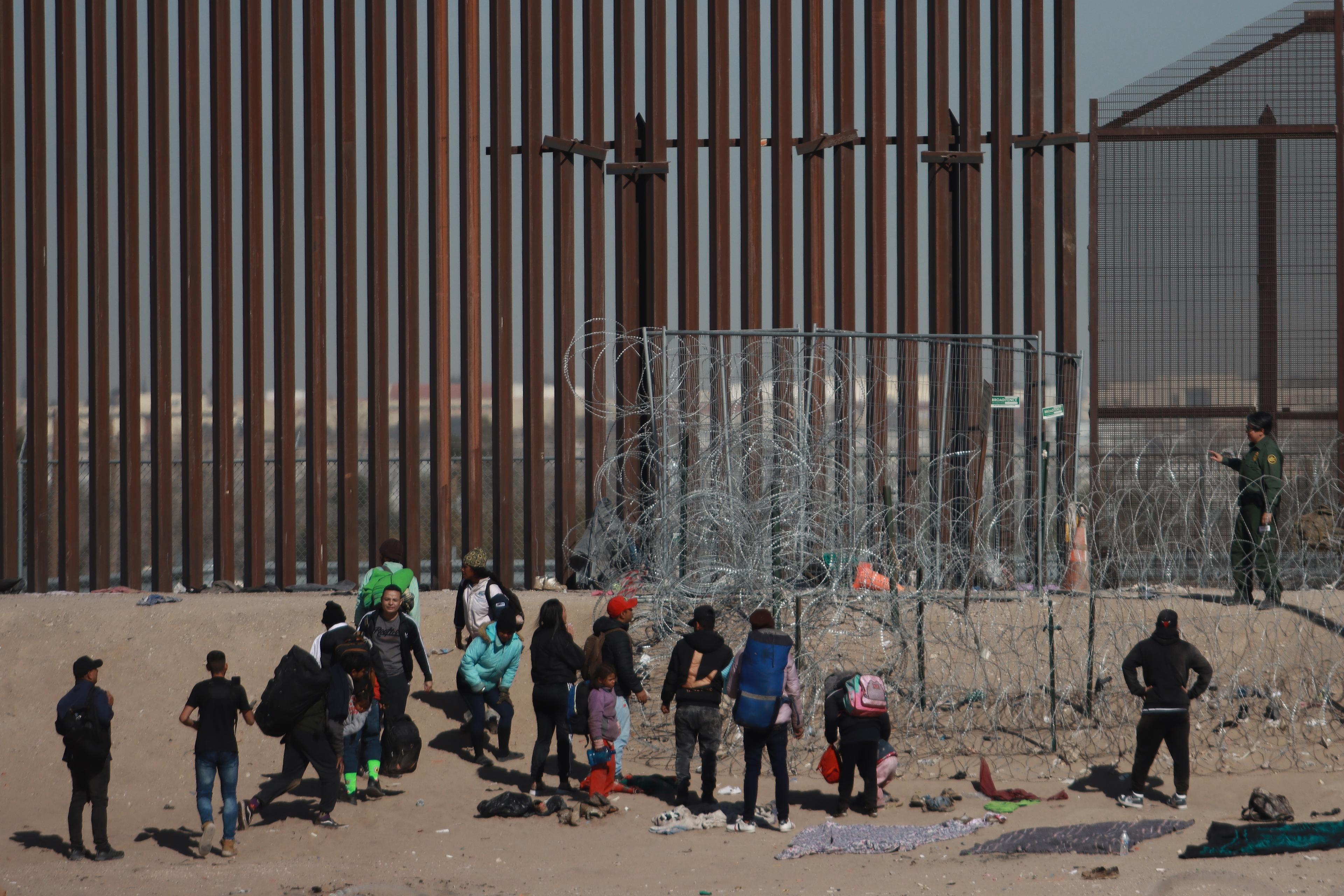World on Fire, Part 3: How Did America’s Border Crisis Get So Bad?
Dara Lind of the American Immigration Council joins Derek to explain why the border crisis has become so severe in recent years
Today is the third and final episode in our miniseries on this unique moment in global war and conflict. In the first episode, we looked at the turmoil in the Middle East. In the second episode, we offered explanations for the historic rise in global conflict between states and within states, from Eastern Europe to Central America. Now, we come home to the U.S.
By just about any measure, the U.S. southern border is facing a historic crisis. Last year, U.S. Customs and Border Protection reported 2.5 million encounters at the border—an annual record. In December alone, border officials processed some 300,000 migrants—a monthly record. This surge has created chaos in parts of southern Texas and Arizona. It has also created a humanitarian crisis and a political headache for liberal governors and mayors in Chicago, Denver, and New York, where shelters are bulging with migrants and tents are strewn across the streets. Meanwhile, in Washington, lawmakers are haggling over a bill to secure the border but making little progress.
Today’s guest is Dara Lind, a senior fellow at the American Immigration Council who has been covering immigration policy for many years. We talk about why the border crisis is happening, who or what is to blame for it, what is to be done, and why immigration is such an impossible issue for American politics to solve.
If you have questions, observations, or ideas for future episodes, email us at PlainEnglish@Spotify.com.
In the following excerpt, Dara Lind talks with Derek about what events around the world have led to an increase in the number of migrants seeking refuge in the U.S. in the past 10 years.
Derek Thompson: This is a big, thorny subject. You are a real expert on it. I’m just a curious person trying to get my hands around a humanitarian and political crisis. So in the interest of full transparency and organization, I want to say from the top that I have three goals for our time together. Number one, I want to understand why this is happening now, why attempted crossings and border encounters have surged to all-time highs in the last few years. Number two, I want to talk about our, America’s, immigration infrastructure, why we can’t handle this surge, why it’s causing so many problems. What are the bottlenecks? What are the policy failures? And number three, I want to talk about the politics: what Democrats want, what Republicans want, what each side has put on the table to try to fix this.
Let’s start with this: Migrant encounters at the southern border reached a record high in 2022. They broke that record again in 2023. Let’s begin by trying to piece together the so-called “push factors.” What’s happening in the Americas and around the world that is causing more and more people to seek refuge in the U.S.?
Dara Lind: The way that I would put it is that the push factors have never been as pushy as they [are] now. A lot of Central and South America is in a position of instability, much worse than it was 10 years ago. The regions have not recovered from the economic hit posed by the COVID pandemic in the way that the U.S. has. Especially in Central America, natural disasters have been really, really severe. And in some of those areas, you also have climate change causing formerly agricultural areas to no longer be able to feed people. And you have a lot of political instability. The government of Guatemala just had a real squeaker of a democratic transition. The government of Ecuador is in what I wouldn’t exactly call free fall, but it’s in not great shape. So what we’re seeing is not just more reasons that people might want to go elsewhere and try to survive elsewhere, but even in cases where they’ve already done that, the first place they’re trying might not be enough for them.
For example, Venezuela. Venezuela has been a regional migration crisis for a decade at this point, and, frankly, the U.S. has never really gotten the brunt of it. The overwhelming majority of people have been in Colombia, been in Peru, have been in Chile or Argentina. What we’ve seen in the last few years is the people who had tried to settle there found either that, post-COVID, they could no longer make a living or that, because of political or, frankly, social factors, they didn’t feel welcome. They were dealing with xenophobia. They were dealing with discrimination, and so they picked up again and set out for the United States in what’s called secondary migration. So we have this combination of not as many places that people can stay if they’re born there and not as many places they can go as a first option.
Thompson: In remarks at Rice University in Texas, Secretary of State Antony Blinken said, “This moment when it comes to migration is something totally aberrational in terms of the historic import that it has. It used to be that when there was a migration crisis, it tended to be one, maybe one country at a time. [Maybe] it was Haiti. [Maybe] it was Cuba. Maybe it was Guatemala, Honduras, El Salvador, the so-called Northern Triangle countries. Now it’s all of the above, plus Venezuela, plus Nicaragua, plus Ecuador.” This is not just about a crisis in one country or another. It seems to be an omni-crisis.
Add to that the global chaos that we just talked about on this show on Tuesday with University of Chicago’s Paul Poast. The number of global conflicts has surged to an 80-year high. That’s not deaths. That’s the number of global conflicts. So when you think about [it]—I love the way you put it—the push factors, they’ve never been pushier, and there haven’t been so many places that were pushing at the same time.
Dara, one way that we can think about where in the world people are coming from is to have a country-of-origin breakdown for these migrants when they arrive at the U.S. Do we have a statistical sense of country-of-origin breakdowns for these migrants?
Lind: At this point, if you look at Mexico and the Central American countries that were the predominant sources of migration 10 years ago, which [are] El Salvador, Guatemala, and Honduras, those four countries make up about half of migrant encounters right now. The remainder [is] not only what people used to call “other than Mexican,” but it’s “other than Mexican or Northern Triangle,” which is the U.S. government’s term for that region.
So what you have instead, it’s much more diverse. You have a certain number of Venezuelans, certain number of Colombians, Cubans, Haitians, [Nicaraguans]. There’s also a certain number of people from India, although those folks tend to come through the northern border. There’s a certain number of Russian and Ukrainian. There’s a certain number of Chinese. So the infrastructure going up through Panama—because it’s much easier to fly into countries in South America than it is to fly into the U.S., where you can’t unless you have a valid visa, or into Mexico, which has been pressured by the United States to not accept people without valid visas—that’s created this ability. Once the word of mouth is out, once social media is active, once there’s a smuggling recruitment interest, then it’s easier for further people to go through.
This excerpt was edited for clarity. Listen to the rest of the episode here and follow the Plain English feed on Spotify.
Host: Derek Thompson
Guest: Dara Lind
Producer: Devon Baroldi
Subscribe: Spotify

